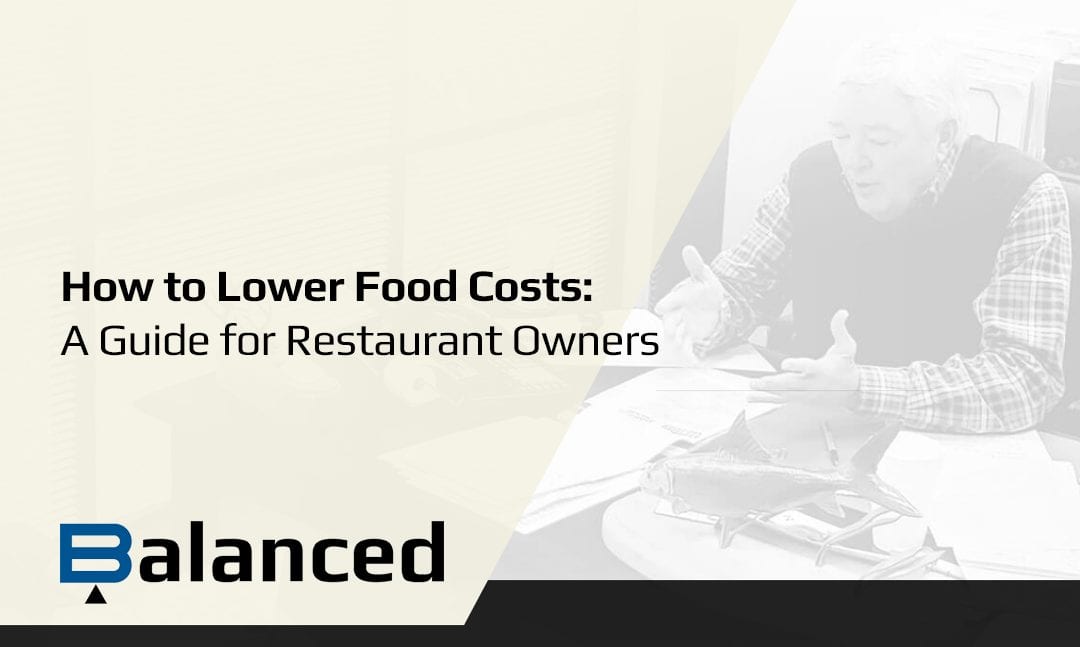
We’re not going to sugarcoat it – controlling food cost is one of the toughest tasks for restaurant owners and operators. It’s not rocket science but it’s tricky because there’s no universal target food cost. Food cost varies based on the menu, season and restaurant concept. The fun part? Food cost will never be the same. It should be within a range but never the same because sales and product costs change by the day, week and month. Cool, right! *SARCASM* It’s not cool but the Balanced restaurant operations team has some insights that can help make food cost more manageable.
Introducing the Balanced Four Ps of Food Cost. If you come to us with food cost woes, we’ll start with the following:
Pricing
Menu price is very important when it comes to food cost. High food cost can be a direct result of low menu pricing. It’s important to consider the cost of each ingredient on a dish as well as the materials that are being used to serve or deliver the dish (more on this on #4). Do you discount? Discounting will also directly impact food cost. If you usually charge $15 for a large specialty pizza but send coupons out for a $10 large specialty pizza, the food cost for a large specialty pizza will go up. We’re not saying not to coupon/discount (that’s a different post); couponing needs to be accounted for when calculating food cost. In short, know how much it costs to make each product on your menu and the percentage that cost is to the menu price or coupon price.
Portion Control
No matter who makes the dish or on what day, it should always be the same. Same ingredients and same portions. Make charts and plate builds are key to ensuring consistency. These handy guides will have the name of the dish, a breakdown of each ingredient, cooking instructions, plating/garnish instructions and step by step photos. Make charts are beefed-up recipe manuals. These how to guides are the lifeline of successful kitchens. Inconsistent portions are a fast track to high food costs.
Projections
Finding the perfect mix of prep, waste and sales is key to manageable food cost. You’re going to have waste, but it can and should be minimized. This is where projections and prep charts come in – how much are you targeting to do in sales and how much prep do you need to do to support those sales? Tracking/monitoring waste is very important. When it comes to a new restaurant, projections can be daunting – are we going to have as many guests as we did yesterday or last week? Did we prep enough or too much? Honestly, all restaurants ask these questions but we’re in this for the thrills, right?
Packaging
Believe it or not, packaging is a piece of food cost. Pizza boxes, to-go cups, the plastic utensils – all of it goes into food cost. All those fancy biodegradable bowls and plates and compostable pizza boxes influence food cost. Eco Friendly is not pocket friendly for restaurants. Most of the eco friendly packaging will run two if not three times more than the dreaded Styrofoam. For this reason, packaging plays a very important role in food cost, especially for restaurants looking to increase delivery or takeout business. Make those prices with third party vendors (delivery providers) count, they should not be the same price as dine in.
The Four Ps of Food Cost is where we start and usually lead to at least one issue to address. Sometimes it’s one P, like projections – we’re missing our sales projections by 10% so we’re taking on more waste. Sometimes it’s a Code Blue and all the Ps are impacted. Whatever the case the Balanced team is standing by to help!
About Balanced
Put simply, we are your partner. We help find balance in the crazy and exciting world of restaurant. Our clients are some of Austin’s favorite eateries. We help with bookkeeping & financial services, human resources, marketing, operations and all the fun in between.
Ready to get started? Us too. Contact us today–